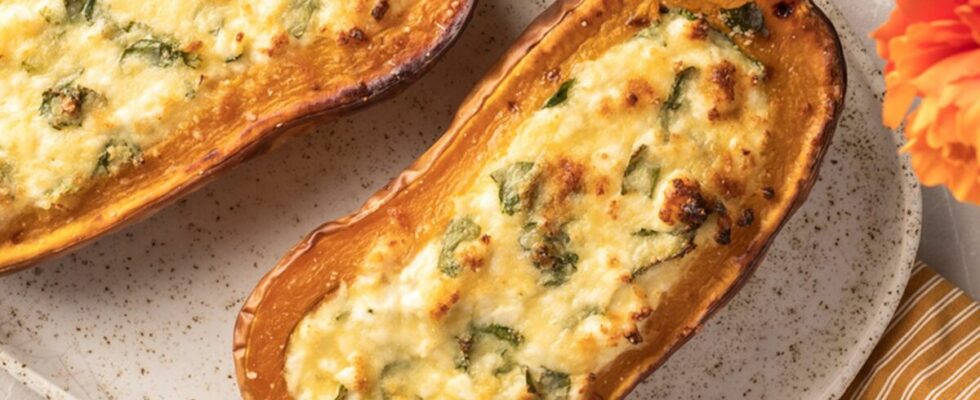It’s not easy to warm up in the middle of winter… Fortunately there are generous dishes like a delicious stuffed butternut in the oven that comfort our taste buds in just one bite! The sweet and savory flavors of this squash combined with ever more delicious toppings, there is no doubt, the whole family will be addicted to it. If the taste will seduce the palate of the whole household, its super simple preparation will delight the cook who will make it. Simply garnish your butternut squash with whatever you have on hand and leave it in the oven for a few minutes and voilà, dinner is ready. For those who need a little inspiration, we’ll give you a hint 20 simple and delicious recipes for stuffed butternut in the oven.
Goat cheese, bacon, honey, feta: our recipe ideas for quick and delicious stuffed butternut squash in the oven
THE stuffed butternut, it’s the ideal dish to delight everyone on cool winter evenings. Whatever everyone’s tastes, there is bound to be a recipe that will please you. If you tend to have gastronomic critics who are difficult to convince around your table, bet on sure values like cheese. Who could resist a butternut stuffed with goat cheese ? This squash, subtly sweet on the palate, pairs ideally with this cheese. Whether you choose a classic goat’s cheese log or a Sainte-Maure de Touraine, it doesn’t matter, your guests will take one bite.
For more indulgence, don’t hesitate to venture into mountain specialties. A butternut stuffed with reblochon, it’s a change from tartiflette, but it’s just as tasty. And if the idea of combining winter dishes and squash arouses your sweet tooth, don’t hesitate to vary the pleasures by stuffing your raclette cheese butternut. For fans of Savoyard cuisine, garnish your butternut with crozets and morbier, it’s a real treat. You are free to accompany it with small potatoes or a mixed salad. Be careful, these very rich recipes are a complete dish and even if you have a fierce appetite, a few shots could be too many.
If you are nostalgic for the summer period, decorate your feta butternut, olive oil and a tablespoon of honey. Season it with a little fleur de sel and dried thyme. By closing your eyes, you can almost imagine yourself on a Greek island. For those who like it a little spicy, add a small teaspoon of chili pepper.
Although cheese and butternut is a perfect taste pairing, there are many other ways to cook your squash. An emblematic dish of vegetarian cuisine, it is generally garnished with quinoa or bulgur then we add grilled vegetables like mushrooms. Of course, don’t forget the parmesan or emmental shavings to obtain that desirable gratin effect. And if you feel like it, place a slice of country ham on top for crunch. Enjoy your food !
Cooking: how to cook butternut?
Butternut is a squash that is eaten cooked. So that the flesh melts in the mouth, a baking is recommended. Like all squash, you have to be patient, for it to be perfectly cooked, count at least 30 minutes at 200°C. The time may vary depending on the power of your oven, but it is best to leave it as long as necessary. Don’t hesitate to let it roast for 40 to 45 minutes if it’s still too hard. To check if it is well cooked, plant the tip of the knife inside, if you don’t encounter resistance, it’s ready. It is important to cover your squash with Aluminium foil throughout cooking. This will prevent it from burning.
Before sending it to the oven, take care to season your squash well. To do this, cut it in half lengthwise and brush it with the fat of your choice. Sprinkle it with salt, pepper, Provence herbs and even a clove of garlic. The confit garlic will add a lot of flavor.
Is the skin of butternut squash eaten?
Butternut is a squash with thin skin, but very hard. Once cooked, it softens, but it still remains unpleasant to eat.
How to easily remove the skin from a butternut?
Due to its very hard nature, some recipes recommend remove the butternut skin. You can peel it using a peeler after cutting it in half. But the simplest way is to remove the skin and leave it on when cooking, then remove the flesh when it comes out of the oven. Leave the squash with its skin, which will prevent overcooking.
